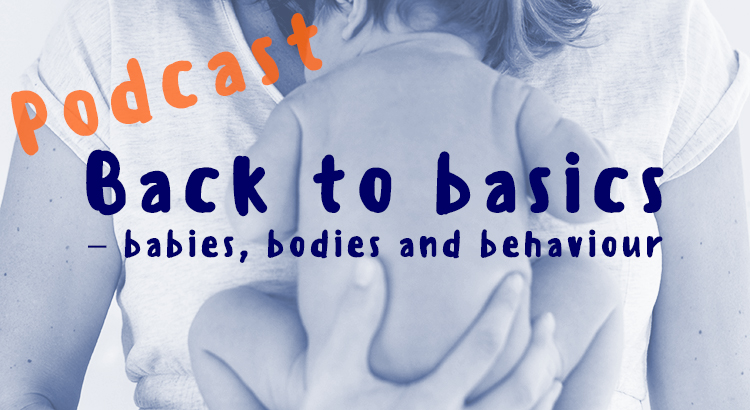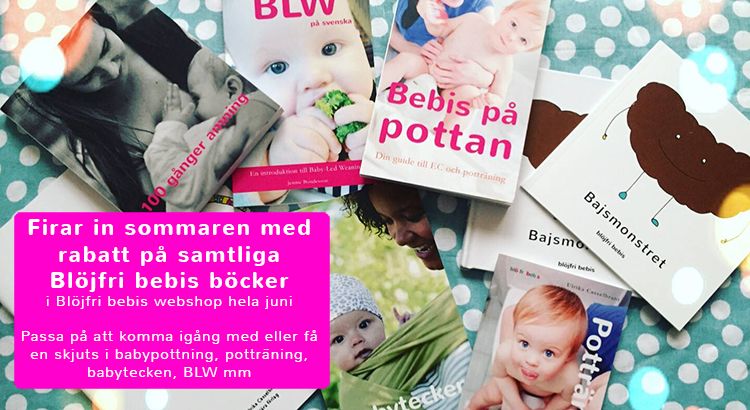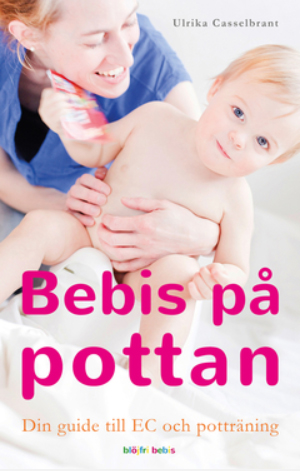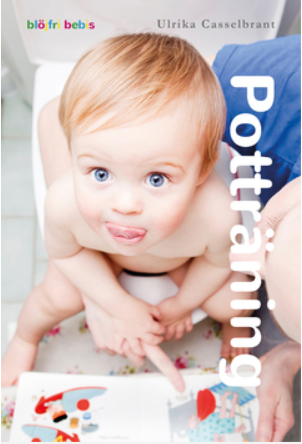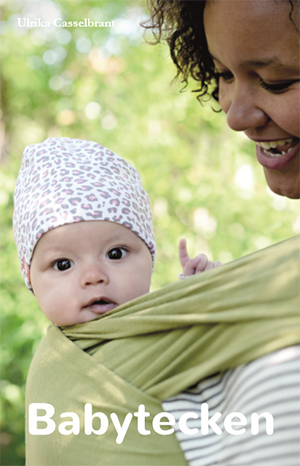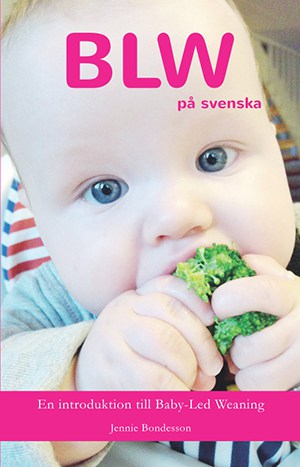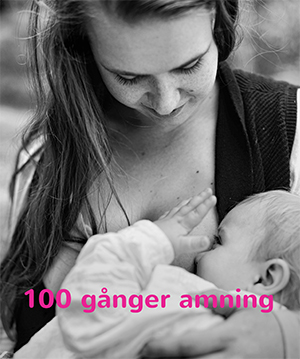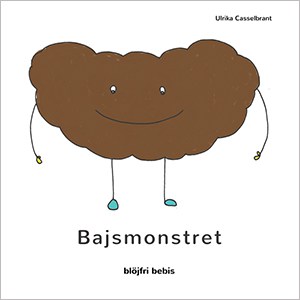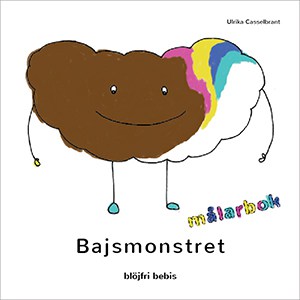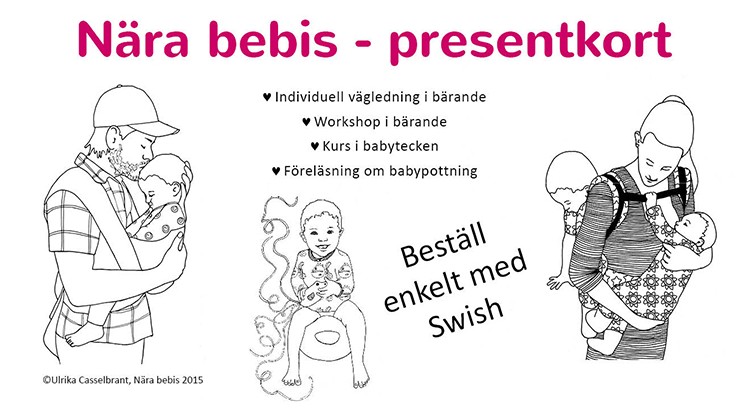Här kommer äntligen andra avsnittet av Back to basics – babies, bodies and behaviour med Mel Cyrille och mig, Ulrika Casselbrant. I detta avsnitt har vi haft fokus på bebisars kommunikation. Vi berör bland annat hur fysisk närhet påverkar hur bebisar kommunicerar sina behov.
Mel Cyrille, är författare till boken In-arms carrying och precis som jag bärandekonsult. Podden är tänkt att beröra allt från bärande, babypottning, barfota, föräldraskap och mer!
Lyssna till eller ladda ner avsnittet här. Du hittar det även där poddar finns, hos tex Acast och Podcaster. Se transkription av avsnittet nedan.
För att ladda ner avsnittet, högerklicka och klicka på spara.
Länk till föregående avsnitt In-arms carrying – reflexes
Transkription Back to basics – babies, bodies and behavior
Avsnitt 2 Babies and communication
Ulrika: Welcome to Back to Basics Babies, Bodies and Behaviour and this is a podcast with Mel Cyrille and me, Ulrika and I guess we should start with introducing ourselves. My name is Ulrika and I live in Sweden, Stockholm. I am a babywearing consultant and also babywearing educator, I guess you could say. I run a peer-supporting course, I have also written a book about elimination communication and I am a doula. And you, Mel, you want to say some words about you?
Mel: Yeah. I am Mel Cyrille. I live in Ipswich in England and I’m a babywearing and in-arms carrying trainer. I’m the author of In-Arms Carrying and I do some public speaking as well.
U: Yes, great, and my book about elimination communication is in Swedish, so not many English readers yet.
M: Yes, unfortunately.
U: (book name in Swedish), in case listeners are wondering what book that is. And today’s subject for the pod is babies and communication and we have also got some questions about this. I asked some of our listeners and asked some of our Facebook group that I am in about questions concerning babies and communication. So, we will ring up some listeners about those questions during the pod. I guess we could talk about what is communication when it comes to babies and what does it look like. Do you want to say any words to start out with that one?
M: Yeah. Well, it comes in different forms, doesn’t it? So, we have physical and verbal communication and each type of communication can be more or less effective depending on how aware we are of that form of communication. A lot of communication goes unnoticed, doesn’t it, especially with babies, as not all of their communication is understood by every caregiver.
U: No, and I guess some of the communication can be very subtle and some more loud, and I guess what you first think about is, like, the sound of screaming and when reading books about child psychology it’s, the screaming is brought up a lot, but I think like all the other ways of communication for the baby is much more, would you say, versatile? Or like, important? It’s much more messages.
M: Definitely
U: But something that would connect communication to the things we talked about last episode was reflexes and I think it’s so interesting how babies communicate through reflexes a lot in the beginning.
M: Yeah, definitely
U: Also, about the big, how do you say? their body, like movement, big movements like we talked about an the kind of the whole, the whole theme of the communication is like to the parents, ’take care of me’, ’hold me’, cuddle me’, ’stroke me’, ’touch me’, because it’s essential for the baby because they wouldn’t survive if we didn’t take care of them for the first couple of months onwards, but, of course, it is important. But about the reflexes, there are also these sound reflexes that they have, that they use. Priscilla Dunstan, do you know?
M: Dunstan Baby Language? Yes, absolutely.
U: They haven’t done any research studies for this and this is obviously reflex sounds like ’meh’ for hunger and the sound of ’ow’ for and ’heh’ for not feeling comfortable. I have seen this even with my older children (???) there was a lot of ’meh’. ’Meh, meh, meh’ and ’ow’. So I heard it quite a lot. So, even though they haven’t had scientific studies on this yet, they have, I do think there can be something with this.
M: I agree
U: And so it’s not just reflexes that the body uses for muscle contractions, like limbs, there is also reflexes when it comes to sound. That’s a form of communication, but I don’t know if these reflex sounds, if there are more innate signals from the baby than early signals from the baby. I guess it depends on the baby as well, so. But, of course, there is also things like eye contact, giving the smile, posture as well. They communicate with their posture, especially when you are holding them, and noise, other noise like grunting and stuff like that, of course. Do you have anything more to say about that, about my explanation and what you can count as baby communication?
M: Well, I think you’ve covered it pretty well there. I think also important to recognise that the communication is two-way as well, that we should be communicating with our babies as well and I think that comes up a lot in EC. The focus being on the communication side of things kind of opens up a different sort of dialogue between caregiver and baby, doesn’t it? But not just verbally, recognising what they’re communicating to us and reflecting that back to them, and that’s important too, obviously, but also the fact that we can communicate to them with our bodies as well, sort of, a very basic example is, you know, when they’re needing to be held and the fact that the act of holding them to our bodies is communication in and of itself, isn’t it? Yes, I think it’s very interesting.
U: The act of holding, communicating, like, to the baby ”I’m holding you”, you are saying?
M: Yeah, yeah, the contact, the bodily contact is signalling to them through their skin, isn’t it? So, yeah, all very, very fascinating.
U: I think it’s so, I mean, they have done research on premature babies and the ? care and, like, having the babies skin-to-skin helps with regulating the heartbeat, temperature and also that the child should remember to breathe, because the child might not remember to breathe at all times and it need to be reminded to breathe sometimes and use, like, the waterbed, so that the baby’s own movement would trigger, like, to remember to breathe. Also, that the baby is held chest-to-chest. That’s very much communication from the parent’s body through the baby’s body and I think that’s very fascinating and I guess also, like, the exchange of hormones going on or oxytocin from the baby triggers oxytocin in the mother and prolactin and stuff like that, so it’s also important, but we don’t talk about it as communication that much, but I’m thinking it must be. One of the questions that we got from Gabriella ?? in Sweden was how babies’ communication changes over time from baby to toddler, generally and also, like, concerning elimination communication and breastfeeding. And maybe if we just some words about what elimination communication is, if someone does not know that, but elimination communication means that you learn the baby’s routines or signals or you use your own intuition for when the baby is communicating that it needs to eliminate, pee or poop, and you can use a potty to facilitate this if you want to. You are, like, answering the baby’s signals or routine by offering a place for the baby to pee or poop. But it could be also be the diaper or the toilet or potty. Usually you hold the baby in the spread squat position because it makes it easier for the baby to poop. Yes, so, back to the question, how does babies’ communication change over time? Do you want to start with that one?
M: Yeah, well, as you touched on earlier, all babies are different with their communication. There are a lot of things that babies tend to do, which makes becoming aware of what they’re trying to say easier to understand if you’ve got some point of reference, So for example we were talking about the reflexive sounds they make, you know, we hear these sounds anyway, don’t we? Regardless of whether we know what they mean or not. But having information which clarifies what they could mean opens up a whole new world, doesn’t it? Erm, so yeah, babies tend to communicate both verbally and physically. So physically in terms of body movements and eye contact and all of that, so over time it tends- over time it changes, it I think varies from baby to baby. Well it certainly has with my three, for mine, who I’ve practiced EC with, they’ve had things which were very similar. Um, especially, I think I’ve been more aware of the physical communication that they’ve…communicated by. Erm, so for example my *sigh* my thirds child [laughing] I can’t remember, I’ve got so many! [both laughing] He um, [coughs] something that he used to do as he, um, began exploring his environment when he was crawling, he would come back to me and hit me. And think it was basically his way of um… So I’d been signing do you want to got to the toilet to him, so he’d obviously learned that this meant toilet, and I think it was a friend of mine, actually, who made the connection. I was like, I sign to him, but he doesn’t make the connection, he comes and hits me! And she was like, “But it’s kind of like what you’re doing, it might be his, you know, less refined motor skills kind of way of signing back to you!” Because it’s kind of, it’s quite a complicated hand action by getting your finger into that position, so yeah what I’m trying to say with this is it’s interesting that when a baby’s not able to communicate with the words that you are communicating to them, because to them, when they’re babbling, I’m sure that they’re talking to us as we’re talking to them but it’s not making sense to us ‘cause they haven’t refined their speech yet and it’s interesting thinking about how babies interpret different ways of trying to communicate and come up with their own ways of doing it. And I think it can be difficult because you have to really be present to um, [tut] to how they’re communicating and make these links because when she said it, it was like “oh yeah, that’s actually really obvious!” but it’s never obvious [laughs] before someone points it out, is it?! Or it isn’t for me!
U: Yeah I know I recorded my youngest son once when he was at the table eating when he was maybe 10, 11 months old, and I just recorded for fun because, you know, it would be fun to have later on, I thought. And when I looked at the video I was like “Oh, he is communicating so much and I didn’t see it!”, you know? I saw some of the stuff, but not the big dialogue he was carrying on, so…it was like, I sometimes tell that to parents that, film yourself with you baby and see if other stuff happens that…
M: That’s a really good idea! Yeah.
U: And I think we really should discuss the question of, like, er, how, what can make it easier for you to understand your baby. But I just want to say something about…sorry did you want to say anything more on that?
M: No, no, no!
U: Erm, my, how I observe communication, when it comes to EC and also now I think a lot when it comes to general communication from the baby, it’s very much reflexive in the beginning, especially when it comes to EC and then communicating that they need to pee and poop because from the beginning they feel a sensation, like we do when we are grown ups. We can’t know how they feel it, how it feels in the body, but they feel that something is going on, something feels different and they will communicate that, and when, I know my son, when he was 2 or 3 or 4 months old he would signal to me that he needed to pee by, erm, by making eye contact and by making this sound – “EH!” – and then he could be kind of surprised when I took him to the bathroom and take off the diaper and he would pee, and he’d be like “what?! What are you doing?” You know? But he couldn’t choose not to signal – he would, like, signal without knowing what would happen next. But then when he got to about 8 months, he would stop this signalling. And he could more choose to signal or not to signal, and that was very frustrating! [laughs]
M: Yeah!
U: But then after a while he started to use the sign language for pee when he was about 10 months, I think, and he did it for about a week and I was so slow in getting, in understanding him, that then he stopped, and I was like, NO!!! [both laughing] But then…
M: He was like, “You weren’t listening to me! You’ve missed your chance now!” [laughs]
U: Yeah! And then he was 11 months, and then he started to say “kkss”, like the sound I had be using with him when I was holding him over the toilet, I would say “kkss” and he started using that himself. And saying “kkssa”, “kissa” is the word in Swedish for pee. And then he could like, choose to say it or not to say it, so that was voluntary, and that’s like with the physical reflexes that get integrated in carrying, they also get like, they change and can be voluntary.
M: Yeah definitely.
U: But they’re still there, I can still, I can watch my 8 year old and 6 year old sometimes and they, I can see they need to pee, they have a very hard time standing still. [both laughing] So of course there are still reflexes but a lot of it is much more voluntary.
M: It’s really interesting, the sound thingy you said, ‘cause both number 3 and number 4 did a similar thing, um, with number 3 it was at 8 months old doing a “pphhhh” sound and um, I think it was at 7 months for number 4, and it was like *gasp* Oh my God! This is like, MY communication! This whole like, WOW thing going on! Um but that, where I’m going with this is it leads into another, er, question that we had, and I don’t have the names…someone asked about, what do I do about my baby, um, protesting the potty, not wanting to use it and then when I leave them alone they then happily go and, and [get a nap 00:20:10] or what have you.
U: You’ll give them a toy or something that distracts them. It’s, the question by [Inaudible 00:20:15].
M: Okay.
U: In Sweden, yes.
M: Yes, so I said, I’m, when, when I read that question, I had a little chuckle because, um, obviously, it may, it may not happen for every baby but it’s very, such a common thing that I hear and I’ve experienced with my own children. Um, so how you were talking about that question, I don’t know if I’ve interpreted it in a different way. Is, is she asking about, um, distracting them when they’re, when they’re on the potty to, to go? Or is it that, that they, they don’t want to go in the potty and then they will go and they’re napping elsewhere when you leave them alone?
U: Uh, it was both that if they’re on the potty and, uh, not wanting to, to go or they want to stand up or something and but you can distract them and then they will relax and pee or that you want them to come to the potty, you see the need to pee but they don’t wanna come and then you distract them or play or something and they will, uh, change their mind and have to come to the potty and relax and pee.
M: Oh, okay. Yes, so I, I read that differently.
U: No, I think it was my translation. Yeah, no, my English translation wasn’t that correct but it’s very very common, yeah. I think most people see it in different ages. Uh, I would interpret that as, that that baby is communicating, like I want stuff in another way. It could be for a young, young child, or it could be like it’s too cold or I don’t like the bright light shining into my eyes or, um, you you’re holding me in a way that’s not comfortable or I have air, I need to burp first or I need to, I have too much stomach in, food in my stomach so you can’t hold me in this way. So they might want to change or for the older child, I would usually say that, or as the parent like what interests the baby. Uh, right now, can you integrate what interests the baby right now into your potty routine like it could be like right now, sound is very fun so maybe to have something to, um, play like a drum, drum on something or is it just fun to open stuff, uh, or is it fun to, um, have a book with sound or is, is language focus right now so maybe you want to sign together with the child or doing stuff like that. Um, if the baby continues to protest, I would not recommend to keep the baby on the potty, it is better to do something else for awhile and you could try, if you really need, know that the baby needs to. And it’s usually the baby feels much more satisfied giving a poop on the potty, you could like carry your child for awhile and then you usually put signals again, and. ’Cause when you, when you carry the child, no matter what age, um, it will, the signals will be more clear and it can probably hold itself as well, it won’t pee on you, depending on the age and stuff like that but, uh, like if the baby is in a, um, doing like a phase of development, um, it will, it might pee on you but otherwise, usually they don’t, so.
M: Yeah. Um, I think this is, uh, a good point to, uh, mention especially for U.K. listeners where, EC, isn’t as popular over here. The, um, the elimination communication, uh, is not a form of potty training. The focus is on the communication side of things and, um, I know with people who I’ve known over here who practiced it and myself as well. Um, a lot of the, the issues that we sometimes run into, um, can be surrounding our need to let go of being in charge, and putting our complete trust in this little person which can be very hard to do especially with, um, society telling us you know, who should be in charge and everything. And also the, the love-, lovely side effect of EC being the you know, we can catch pees and poos away from the body, less mess and everything. Um, there can be a bit of a, sort of, you enjoy that side of things, so you want it to continue sort of thing. So, so when communication issues do come up, it can be quite frustrating, you know?
U: Mm-hmm.
M: So, yeah. This for people who maybe…
U: Yeah, and most, most people use, um, use a diaper on the baby as a back up.
M: Yeah. Same here.
U: Full time or part time or just, and you use, I think it’s important when it comes to elimination communication that you practice it as a level that’s, uh, functional for your family or like, um, some people only do it at home, some people only do it when they’re out and about because it’s easier if you’re carrying them a lot.
M: I, I have a question for you, about this whole, the whole elimination communication thing, because, um, it’s very much, from all the information that I have read over the years , it’s very much, sort of offered up as this thing that you can practice as little or as much as possible and it won’t affect the baby or child in any way. Um, but for me, I’ve felt that each family obviously needs to practice it to whatever level is most beneficial for themselves as you just said, but, is there, is there an issue that comes up if we’re not keeping the dialogue going? Do you know what I mean? If, um, so…
[Crosstalk]
M: You know, if we’re saying, oh, we’re, um, I’m only going to it when I’m at home, I’m not going to do it when I’m out. Is it, is it detrimental in any way to then switch off and effectively ignore the baby’s signals when you’re out and about? You know, to, when they’re expecting you to communicate back to them, how do you feel about that?
U: For most babies, I would say I don’t think there’s any like bad thing or so, because they would learn that okay, in this environment home, we do it like this. In another environment, being outside, okay, we don’t. And, and they can also be different like with, okay, the mother does it this way, and um, the, if she got a partner and does the Father or the other mother to the baby does it another way, and usually babies learn that, okay, different grown-ups will take care of me in different ways. Um, and they will be fine with that. But, if the baby is really showing clear signs that it wants to poop on the potty, it wants to poop in a position, spread squat position. Then it can be difficult not to listen to that, because it might, uh, give the baby constipa-, constipation if you don’t listen to those signals, Uh, but usually with those babies, you probably pretty motivated to facilitate opportunity to poop on a potty or a toilet, because usually it’s, I mean it’s much less mess to take care, take care of. And usually those babies will hold themselves for a bit also and they would be probably pretty loud and wanting communication. So if you, if you have a baby who’s really showing clear signals that I won’t, I’m going to poop in the potty, otherwise I’m not gonna poop. Then, of course, you have to facilitate that, otherwise.
M: So what, what I’m kind of more thinking about is just, literally, just communication side of things rather than the act of helping them to eliminate. Um, and it’s just because, um, because I’ve, my observations, my limited observations, as not many people I know have actually practiced it over here and with my children especially, um, has been noticing the frustration when they’re trying to communicate and like we’re not responding back to them. So, like for example, um…
U: Do you mean just with elimination communication? Or communication in general?
M: Well, I guess communication in general but I’m specifically talking about EC at the moment. Um, so, what I’m trying to ask is, um, is it important to actually just keep the dialogue going? You know, if we’re seeing the communication happening. Um, or does it teach them when we’re not listening to them. So, for example, um…
U: But you can listen, but you can listen and give another suggestion.
M: Yeah, no this is why I’m saying.
U: Like, okay, mommy doesn’t have time to take you to the potty right now so you can pee on your diaper.
M: Exactly.
U: So, yeah, continue communicating but then, I think if you then continue saying that, uh, I hear you, you can pee in your diaper, uh, of course they can continue for months on to communicate that they were peeing on their diaper but I think a lot of babies will stop communicating them, like we had the flu, the family had the flu, uh, and I was like too exhausted to do anything about listening to the signal. So I think it took maybe two days and my baby stops signaling, and my baby was about 6 months or something. And then after two weeks, I was like, okay, now I’m ready again. And then it took about half a day and he would start signaling again. And he didn’t seem like, it was like okay, you know, maybe we’re on again, you know and I think so much is happening in the baby’s development, continually they have certain like days or weeks when they make leaps in the development but otherwise they continue development all the time, so I think so much new stuff is happening and like their, their world are changing at these leaps. So I think, uh, I don’t, I think babies will learn okay, now we have a new routine, uh, but it’s, it’s like if you look at like attachment is important that like you try to listen to the baby’s signals and of course you can miss as well, it’s not like the baby’s gonna have a, the baby will still have a secure attachment even though you like miss a feeding or miss a communication but feeding, but like if you do it sometimes during the day you will answer the baby’s feeding signals and sometimes during the day you will be like oh no, you can just lay there and scream, you know.
M: Yeah.
U: The attachment won’t be secure. But I don’t think, since the baby will pee, it will pee in the diaper, in the pants they have on them, it’s not like when it comes to feeding it needs, this time it needs to get full, you know. But with the elimination communication they can still eliminate wherever they are, even though, I think it’s, I think it’s a difference compared to feeding.
M: Yeah, yeah. I agree with that. Um, I think it goes back to, [again 00:33:29], doesn’t it the, every baby and child is individual, um, responds differently to different situations.
U: Yea, and there’s something I would also like to add, yeah, something yeah, sorry.
M: It’s okay.
U: No, but something I would like to add as well is that when it comes to elimination communication if, if the parent or the, the caregivers giving too much focus on the elimination communication, getting too stressed or like able to catch every pee of stuff like that. Usually the baby gets tired of that and the parent gets tired of that as well and then the baby will start to protest…
[Crosstalk]
U: Not wanting to sit on the potty, so it’s like, um, it’s a balance there so, um…
M: I definitely agree with that, yeah. The hovering and yeah, trying to…
U: Yes, that doesn’t work so you need to have kinda like a relax, uh, you need to be relaxed but also at the same time be, you have to be attentive maybe, but also relaxed about it. So, um…
M: Yeah, definitely. And they pick up on your stress don’t they, anyway.
U: And usually, yeah, and usually was like for me carrying like baby wearing [Inaudible 00:34:45] and I was carrying is so much connected to a baby wearing because if you carry your baby in your arms where you have it in a sling or a carrier, self-carry, it makes usually elimination communication so much easier.
M: Yes.
U: But cause you don’t have to be attentive by looking at the baby or you could just, you have the baby in your body and you feel the baby’s expressing like grunting or not feeling well comfortable you feel it such, you feel the subtle, uh, communication from the baby and usually the baby will hold the pee and the poop if it’s communicating it will hold the pee and poop longer when you have it in your body, not for like hours but say for like 5 minutes or 15 minutes when it’s 6 months old.
M: ‘Cause they don’t want to eliminate on you do they.
U: Yeah, so there’s like, so I would say like to carry the baby is really really, um, using babywearing is very beneficial when it comes to EC.
M: Yeah. So I thought maybe we can, um, answer another one of the question.
U: Mm-hmm.
M: Um, which will also tie in to, um, carrying and communication. So, if we cover a bit of that at the end as well about, um, communication when they are being carried in arms, um, we’ve talked a lot about EC which is helpful as well.
U: Yeah, got a lot of…
[Crosstalk]
M: Yeah, it’s a fascinating subject isn’t it. Um, but yeah, maybe we can talk a little bit about the ways, um, babies and children communicate on body on the carrying process.
U: Mm-hmm.
M: Um, so, where should we start with that? Shall we start by talking about that or answer the question first, do you think?
U: I guess we could say the question, it was the one with linear [Inaudible 00:36:46] and I guess with the, I would like to get suggestion on how to answer when people say my baby does not want to be in the sling or a carrier.
M: Yeah, that’s one.
U: And I guess we talk about that also last episode, uh, and then we referred to babies being about 4 months old and protesting and being in the sling and carrier and, um, you could try if you were sling and a carrier you could try with different position, I guess, uh, to see if the baby is more satisfied, maybe we can have in our [mouth 00:37:20] or sit on the hip or so. But, but also to take the baby out of the sling and a carrier is also a suggestion, so may-, because maybe the baby is communicating here that it wants to be more active and it’s carrying and then not to be restrained by a sling or a carrier.
M: Yeah, so this, that kind of tends to be sort of the missing piece of information, generally doesn’t it? When it comes to this, um, this issue for [caregivers? 00:37:54]. Um, the fact that, there is another, another possibility, um, to resolve what’s going on here in terms of the, the active in arms carrying as it’s not well known, obviously. But yeah. So babies can and will communicate, they won’t be active participants in carrying. And when they’re communicating, this, it’s interesting because the type of communication that goes on between, um, baby and caregiver in active carrying is different to in slings and carriers. Uh, we’ve touched on this before, I think, um, possibly in the previous podcast or just, you know, in our general chats, so anyway, um, the active carrying, is something which happens during in active and alert state, the baby needs to be in certain state of alertness, um, to participate in this. And the communication that goes on between baby and caregiver at this level with the environment around them, tends to be fairly different to the communication that goes on in slings and carriers, isn’t it? Um, yeah, I think it was last episode wasn’t it? Where you mentioned somebody had mentioned to you, how they had noticed, you know, my baby is never bored when they’re actively being carried.
U: Yeah yeah.
M: Yeah. So, yeah. That’s, it’s really interesting way for communication there, you know, I don’t want to be in the sling or carrier. Um, obviously, sometimes we need them to be and need to work around that but if we don’t need to, if we don’t need them to be in there, maybe, uh, we can try meeting that need, um, in a different way and see if it’s that they want to be carried actively.
U: If the baby are in the sling or carrier, and it’s frustrated like its being sleeping and then wake up and screams or wriggles and really clear with about wanting to get out. It can also be, uh, that it needs to pee and poop, uh, and it’s a signal and really clearly. So that’s also an answer to this question or something that you can try if the, if the baby doesn’t want to sit in the sling or a carrier. Try to let it out and if you practice elimination communication, you can put it on the potty or hold it over the sink, or if you don’t practice elimination communication, you could say like hold your baby in a spread squat position, you keep the diaper on and just hold it on your lap but you face the baby outwards. Could be something to try. and then maybe the baby is satisfied with, um, sitting tummy to tummy in your arms or to go back in the sling and carrier again after it has [Inaudible 00:41:07] possible to pee or poop. And if they need to poo, of course you have to change the diaper after that. I mean why it’s important to listen to baby communications has different levels and I guess at a very basic and very important level is when we answer baby’s needs like for feeding and do that as a routine, not once in a while, we do it as a routine. We always, as much as we can try to answer baby’s needs, uh, they are building a pathways of neurons in their brain that are making expec-, expectations of positive outcomes of their needs like I feel hungry, uh, okay, my mom and dad answer to this need in a certain way, okay. And then if they continues to answer in a certain way, a lot of times like feeding them, um, they will have a positive expectation of okay, my need is important and it will be met. And what also you could see when the baby grows older if you feel like use baby sign language to give the baby more opportunities to be able to communicate, you know, much less frustration. And, and I guess that’s also like why [is potty to be 00:42:31] important to listen to the baby’s communication when it comes to carrying, I think also because she could, how much, less frustration. And I do think, um, it’s difficult to understand baby communication for most of us, you learn as you kind of go on with your baby, the parent is the best one to interpret the baby, it doesn’t matter maybe, it can never be an expert on someone else’s baby. So it’s, always, the parents is the best, uh, at interpreting the baby but it can still be difficult, but, um, I think when it comes to carrying it’s important because it’s, um, you also are showing that okay, your communication is important to me, with you’re trying to communicate and I’m trying to understand. And then babies are okay also with being misunderstood and gave many many opportunities also but when it comes to EC, they gave many opportunities to try to understand. Uh, and if you don’t understand, they will start communicate in another way. Um, um, but it’s like if a feeding is a very basic level, I guess communication when it comes to carrying is also important but it’s not like, I’m thinking like when it comes building a secure attachment, you have many different. Um, 2 or so scenarios or situations in your everyday life that will help you with the secure attachment. So you don’t have to carry, you don’t have to use elimination communication to get a secure attachment but it can help out in your everyday life.
M: Yeah, yeah. And I think it’s, um, it’s important to kind of, sort of flip it the other way round and, think about you know, why is it, like you say, why is it important to listen to and communicate back to your baby or child. Um, if we think about well, how would we feel? Or how do we feel if we try and communicate something, to someone and [Laughs] funny enough, uh, this is happening to me yesterday with my husband, going round around in circles trying to like, communicate something and he’s just, he’s, he’s not listening to what I’m saying, he’s hearing the words that he wants. [Laughs] And it’s so frustrating and we think oh, my goodness, can you imagine? You know, I’m being a-, I’m able to articulate what I’m trying to say and this is just [wilful 00:45:08] misunderstanding [Laughs] in this situation. But you think of a baby or child who’s having to communicate in all these different ways to you know, the caregiver, you know, may not understand and stuff like how, how frustrating it must be if you know, if we’re not making a conscious effort to communicate back to them as well because tha-, that’s not the thing where they say, it’s a two-way street, it’s not just about the baby communicating to you, you know, it’s reinforcing, yes, I did hear you, you know, when they made this like even as a newborn say oh, I hear you, you need to go pee, or oh, whatever, it’s building up a two-way, two way dialogue, isn’t it? So, yeah.
U: Yeah. And as well when it comes to carrying to communicate with them verbally about what’s going to happen, uh, like I’m gonna put you up on my back or, uh, I’m gonna lift you up and do that communicate verbally will also help them especially when they get a little bit older to be prepared, okay, now I’m going back in the back, and this like, if you’re gonna, you’re holding the baby on a slide and it’s quite small and you maybe you count down and say okay, on three, I’m gonna put, you’re gonna go down the slide, um, for them to prepare their body. Uh, and I know you have written, write a blog post about that as well that you could give us a study that you could see that the babies prepare themselves to be lift up, because they see that you’re coming, so mean you communicate with your body language, um, but you can also, um, communicate even more clearly or in several ways by usually body language but also use your voice as well, telling them what’s going to happen.
M: Yeah. Well, this is, as, as we thought, this is a really fascinating subject and we could do multiple podcasts on it. And, um, maybe in the future one, um, we can do one about, um, the, yeah, actually focusing on the communication in the carrying process.
U: Mmm.
M: Um, so maybe, maybe you listeners can ask now if that is something that you may want to hear from us about in the future.
U: Yes and give us some questions as well, if you have certain questions about carrying in and communication.
M: Mmm, mm-hmm.
U: I think maybe now where I got more questions about elimination communication, when I ask for questions on like baby communication is, because it’s, it’s so clear, communication is so clearly connected to elimination communication for everyone, practicing it and maybe for the ones practicing baby wearing or in arms carrying, they don’t think that much about the communication, even though it’s such a central part of it.
M: Yeah. You see it’s fascinating and I’m sure we will do many more podcasts, focusing on different aspect about it as well.
U: Yes, everything is like linked together. And I’m, okay, so I guess we say bye for now.
M: Yup.
U: To this episode. Okay.
M: Bye.
U: Bye.
